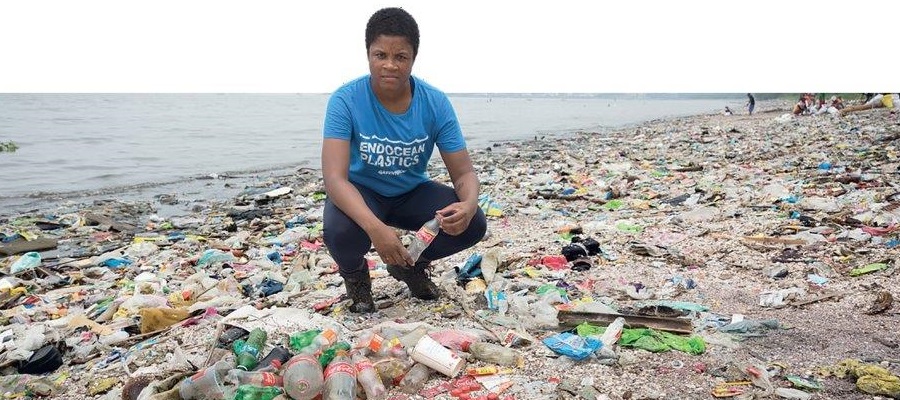Recently Coca Cola Company has been challenged with a strong public criticism by Greenpeace. There is a campaign with the main slogan: “Don‘t let Coke choke1 our oceans!” The pollution of our oceans is enormous. You must have seen pictures of oceans which are completely contaminated by plastic bottles. We have to emphasize it is not only Coca-Cola Company which pollutes our waters. However, there is no doubt that Coca Cola is the biggest producer of single-use plastic bottles in the world! The real problem is that only a tiny fraction of these bottles are recycled. Most of the bottles, instead, end up in landfills2 or in the oceans.
Each year, tonnes of plastic waste leak3 into our waters, and plastic single use bottles are the most often found plastic waste in our oceans, rivers, and lakes. This plastic waste is deadly dangerous for all animals, especially sea animals and birds. We can find plastic bottles also in the Arctic, where they endanger polar bears. Paradoxically, an image of a polar bear is the symbol of Coca- Cola’s famous Christmas advertisement.
Members of Greenpeace and their volunteers have spread the messages about the Coke – choke problem.
The biggest and most spectacular part of Greenpeace anti-campaign was the huge installation of a polar bear standing on a block of ice, covered with plastic Coke bottles. It was placed on Piccadilly Circus in London right in front of the biggest company billboard in the city. As part of their Christmas anti-campaign they re-made the advertisement with the famous truck full of Coke. You can watch it on YouTube.
What does Greenpeace demand?
Greenpeace wants Coca-Cola to rapidly decrease the single-use plastic bottle production and start using alternative and sustainable4 packaging as soon as possible. They must also collect the majority of their bottles currently circulated on the market. Last but not least, it has to take responsibility for all its actions which damage our environment. Greenpeace calls on the public to participate.
You can find all the information on Greenpeace’s webpage.
Editor’s Note:
The main aim of this article is to raise awareness5 of the danger this plastic bottle waste represents. The majority of us do have bottled water in our households. What do we do after we finish drinking? The reasonable people dump their plastic waste into special yellow containers. If you look around, what percentage of your neighbours do it properly?
We have seen many people who dump it into ordinary containers meant for common household waste. The same problem is with paper and glass waste. Many plastic bottles, cans, and glass bottles are scattered along hiking tracks, in our forests and lakes.
Activities:
-What do you think about this Greenpeace campaign?
-If you were in charge of the preservation of our environment, what measures6 would you take?
-How should society deal with people who harm the environment? Is public education sufficient? What about fines7 and penalties8?
-What solution to this problem would you suggest?
Sandra Pálenčárová
Vocabulary: 1 zadusiť, zahltiť – zadusit, zahltit; 2 skládka odpadu; 3 tiecť, unikať – téct, unikat; 4 dlhodobo použiteľný – dlouhodobě použitelný; 5 povedomie – povědomí; 6 opatrenie – opatření; 7 pokuta; 8 trest

